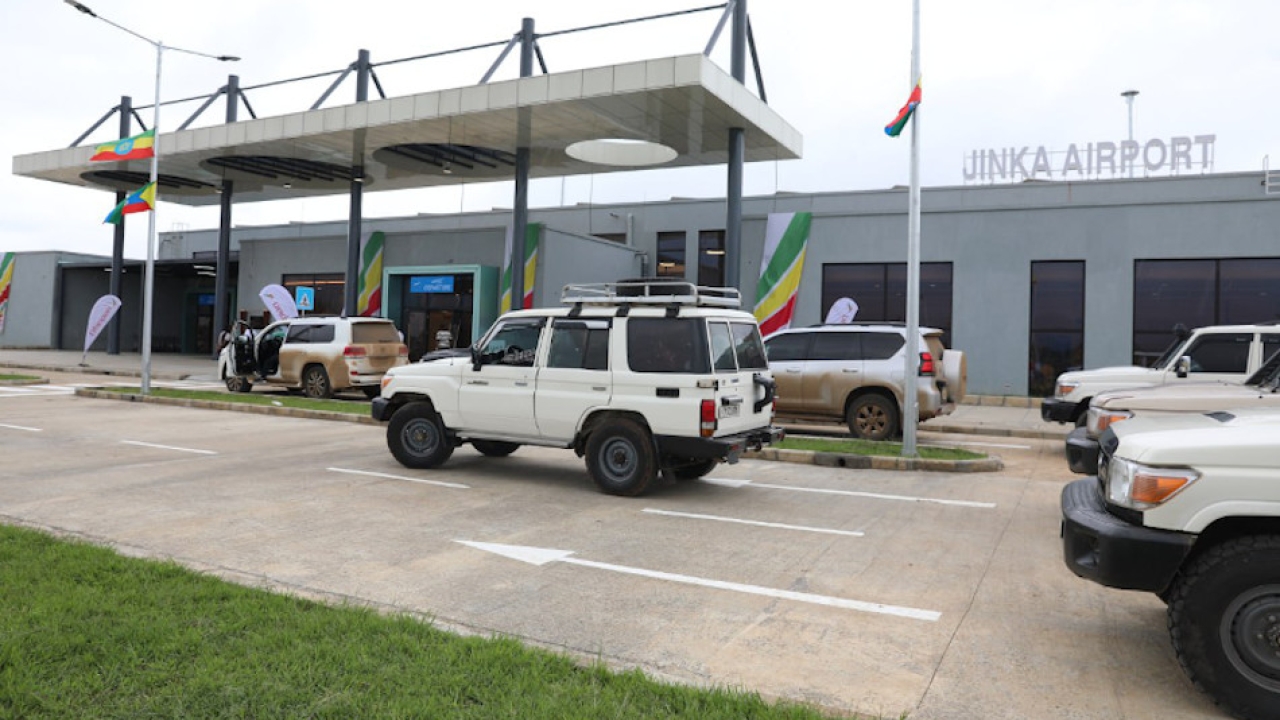Creating Ethiopia’s super Bole
As the national carrier, Ethiopian Airlines, is acquiring new fleet and opening new international and domestic routes, the Ethiopian Airports organisation is trying to keep up with the growth. Kaleyesus Bekele reports.

“With the national carrier expanding, the demand for bigger and better airports is increasing,” according to Eskinder Alemu, CEO of Ethiopian Airports.
The organisation has been engaged in upgrading airports and undertaking expansion projects in the capital, Addis Ababa, as well as in the regional states.
In line with the growing demand, Ethiopian Airports launched the $400 million Addis Ababa Bole International Airport expansion project in November 2014. It has three phases.
The first was the expansion of Terminal 2, which handles internationals flights.
Inaugurated in 2003, Terminal 2 had a floor area of 48,000sqm and a design capacity for six million passengers annually. Under the expansion project, it was given an additional floor area of 74,000sqm. A large commercial duty-free area was added and the project was inaugurated last year.
When the expansion project is fully complete, the airport will have the capacity to handle up to 25 million passengers annually. It currently accommodates 12 million.
The China Communications Construction Company (CCCC) is the contractor, while the French firm, ADPI, is project consultant. The passenger terminal expansion building is designed by CPG, a renowned Singaporean company. EXIM Bank of China has financed the project.
The second phase is the construction of the VIP terminal. It has two floors featuring restaurants, a press briefing room, a meeting hall and cocktail ballroom, plus a VIP saloon. There will be three different access ways for diplomats, senior government officials, and heads-of-state. It will have its own car park and access road.
“Work began in 2017 and we hope to inaugurate either this month or next,” Alemu said.
The third phase is the expansion of Terminal 1, which currently handles domestic and regional flights. “Terminal 1 will totally be transformed and merged with Terminal 2. It will still be used to handle domestic flights but it will have a different look,” Alemu said.
The project is expected to be completed in 2021.
“We are not only expanding the passenger terminal but also working on the tarmac,” Alemu said.
The apron, which used to accommodate 53 aircraft, now can handle 75 at a time. It will also have a separate stand for general aviation light aircraft, operated by private operators.
The runways have been upgraded and maintained. “Three new taxiways have been created and now we have six in total,” Alemu said. “All these works increase the number of arrivals and take-offs we can handle.”
The organisation operates 22 airports in the country and four of them are international – Addis Ababa, Dire Dawa, Bahir Dar and Mekelle.
According to Alemu, his company is also undertaking major upgrading and expansion projects in the regional towns. “We are building baggage-handling systems (BHS), ground-lighting systems, fence lighting, and other different facilities and infrastructure,” Alemu said.
Ethiopian Airports is installing BHS in Hawassa, Kebri Dar, Dire Dawa, Mekelle, Axum, Lalibela, Gondar, Arba Minch, and Semera Airports. It is also building ground-lighting systems in Jijiga and Jimma airports.
Perimeter fencing and lighting work will also be undertaken in eight stations in the regional states.
Ethiopian Airports is also in the process of launching construction for five new airports in the regional states – Mizan Aman, Gore Metu, Debre Markos, Negele Borena and Yabelo.
Even with all the ongoing expansion work, there is concern that Bole International will be congested again after few years.
Consequently, the Ethiopian Government and Ethiopian Airports is planning to build a new mega airport outside of Addis Ababa.
According to Alemu, the planned airport will have four runways, one big terminal and a commercial area. It will have a capacity to handle 80-100 million passengers per annum.
“It will be comparable with all the major known international hub airports,” Alemu said. The total cost of the project is estimated at $5 billion.
ADPI is working on the site selection and other preliminary studies with Ethiopian Airports and Ethiopian Airlines.
“We want to have airports that meet international standards and have operational efficiency. We want to have airports that passengers appreciate,” Alemu said.
Beyond Ethiopia, Ethiopian Airports anticipates the possibility of managing airports in other African countries under contract agreements.
Stay up to date
Subscribe to the free Times Aerospace newsletter and receive the latest content every week. We'll never share your email address.

